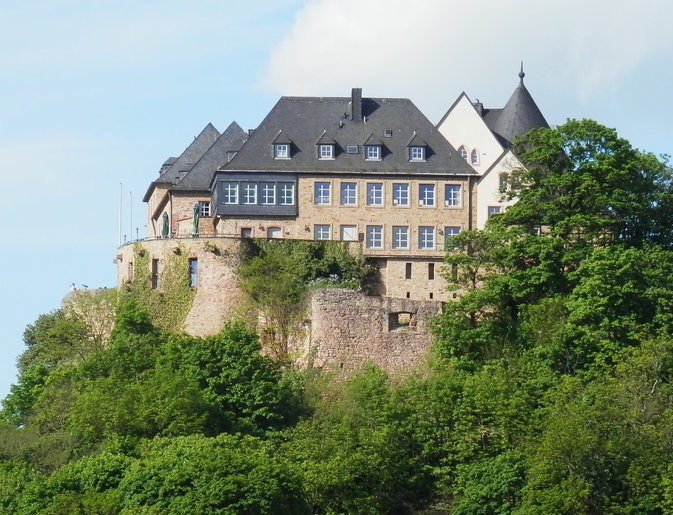Martin Luther in Life and Death, Part 9: The Point of No Return
In the last two segments of our series Martin Luther in Life and Death, we hope to have demonstrated that the Protestant Reformation was not only religious, but it was also political, and that regardless of the religious principals, it is absolutely naive to think that the princes of Germany joined the Reformation because of those principles alone. Rather, politics was much more responsible for the success of the Reformation than religion. If it were not for certain German princes and their enmity with the pope of Rome, Martin Luther would have been burned at the stake before his Lutheran church even became established. And while we may begin to understand a lot of the politics, the sinister forces behind some of the players will forever remain in the shadows.
A backdrop to Luther's Reformation were the Italian Wars which spanned over 60 years and most of Luther's life. Involved at diverse times were the French, Spanish, Austrians, Germans, Venetians, English, Scots, and, of course, the Popes. The papacy had been reduced to the role of just another political player in the struggles for the political control of the various parts of Europe. But the Papacy had an advantage because it was attributed with ecclesiastical authority. When its ecclesiastical authority was challenged by the religious Reformers, the objectives of the Reformers simply became a tool used by the political players to undermine the authority of the Popes. Some German princes put their lot with the Reformers, hoping to gain greater power or at least greater autonomy for themselves. Others chose to remain allied to the popes, as Roman Catholics, but their decisions were usually for relatively the same reasons.
In the background of the political struggle, we began to see how the humanists of Germany had rallied to Martin Luther's cause. We described how those humanists, once they realized the value of Luther's rebellion against the Papacy, had begun writing books and pamphlets propagandizing in favor of Luther. We saw how many of the pagan humanists who had opposed the scholarly theologians for so long were suddenly themselves transformed into Christian theologians virtually overnight, while humanists inside of the church itself had also rallied to Luther's cause.








 Frederick III of the House of Wettin, who also known as Frederick the Wise, was the Elector of Saxony and Landgrave of Thuringia and, upon the death of Maximilian I, he was also the preferred choice to become emperor by the de Medici Pope Leo X. However Frederick chose instead to support the efforts of Charles V in his bid to become emperor, and Frederick was instrumental in assuring his election. Martin Luther had long been a friend and correspondent of George Spalatin. Like Luther, Spalatin was a priest, and he was also one of the young humanists at the University of Erfurt who were under the tutelage and leadership of the Catholic prebendary and famous humanist, Conrad Mutianus, whom we had discussed at length in the earlier presentations of this subject. It was Mutianus, or Mutian, who had introduced Spalatin to Frederick, and in 1509 Spalatin became Frederick's librarian, but quickly rose to the position of court chaplain and secretary. Spalatin was with Frederick at the election of Charles V, during his coronation, and also at the Diets of Augsburg in 1518, and of Worms in 1521, where Luther faced trial. During the years from his time at Erfurt and up to this time approaching the Diet of Worms, Spalatin had always urged Luther to caution. But he nevertheless supported Luther even after Luther failed to heed his advice.
Frederick III of the House of Wettin, who also known as Frederick the Wise, was the Elector of Saxony and Landgrave of Thuringia and, upon the death of Maximilian I, he was also the preferred choice to become emperor by the de Medici Pope Leo X. However Frederick chose instead to support the efforts of Charles V in his bid to become emperor, and Frederick was instrumental in assuring his election. Martin Luther had long been a friend and correspondent of George Spalatin. Like Luther, Spalatin was a priest, and he was also one of the young humanists at the University of Erfurt who were under the tutelage and leadership of the Catholic prebendary and famous humanist, Conrad Mutianus, whom we had discussed at length in the earlier presentations of this subject. It was Mutianus, or Mutian, who had introduced Spalatin to Frederick, and in 1509 Spalatin became Frederick's librarian, but quickly rose to the position of court chaplain and secretary. Spalatin was with Frederick at the election of Charles V, during his coronation, and also at the Diets of Augsburg in 1518, and of Worms in 1521, where Luther faced trial. During the years from his time at Erfurt and up to this time approaching the Diet of Worms, Spalatin had always urged Luther to caution. But he nevertheless supported Luther even after Luther failed to heed his advice.







